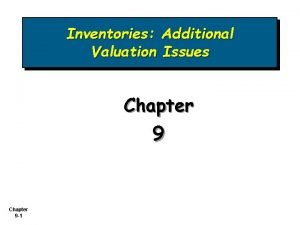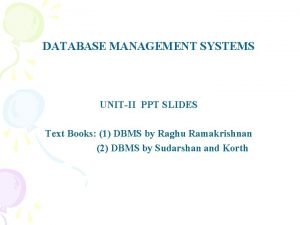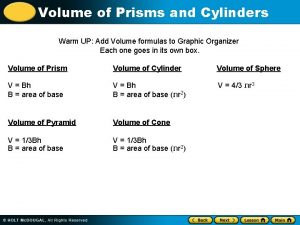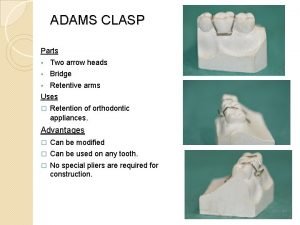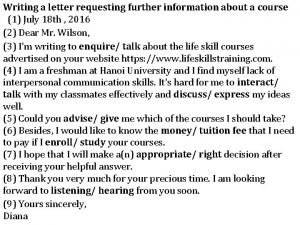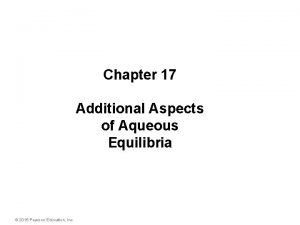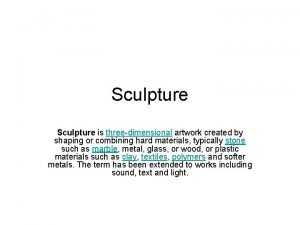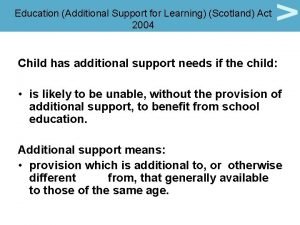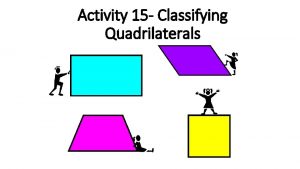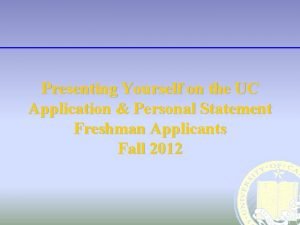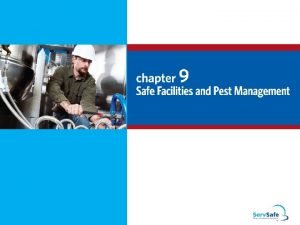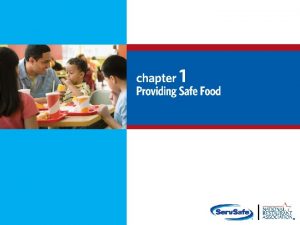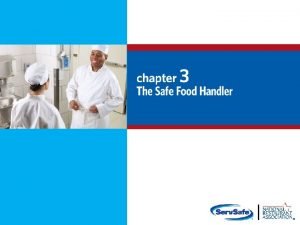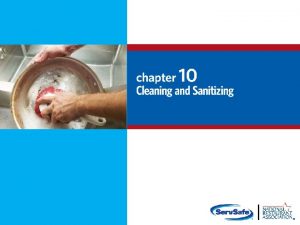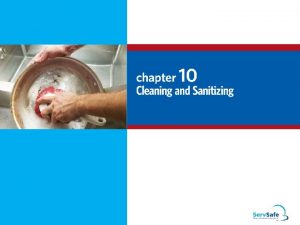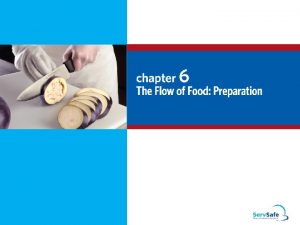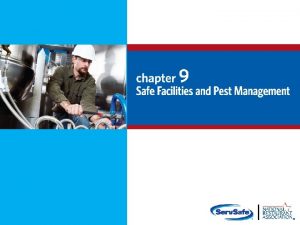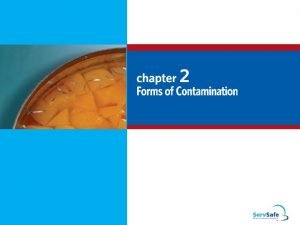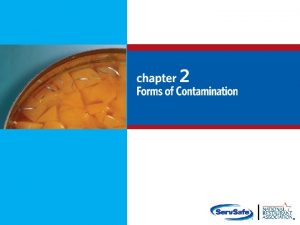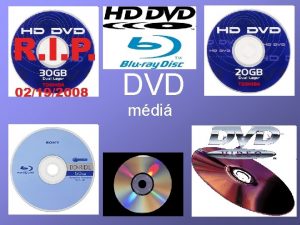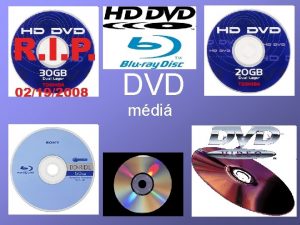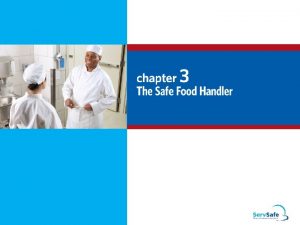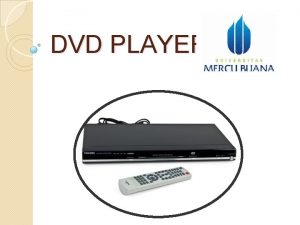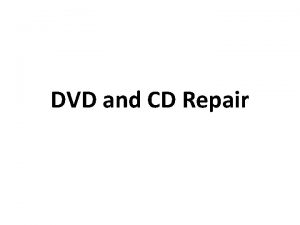DVD Lets watch a DVD 10 2 Additional


























- Slides: 26


DVD Let’s watch a DVD… 10 -2

Additional Content Some other things you should know… 10 -3

Guidelines for the Effective Use of Sanitizers Chlorine Water temperature Water p. H Water hardness Sanitizer concentration range Sanitizer contact time 10 -4 ≥ 100°F (38°C) ≥ 75°F (24°C) ≤ 10 ≤ 8 As per manufacturer’s recommendations 50– 99 ppm ≥ 7 sec

Guidelines for the Effective Use of Sanitizers Water temperature Water p. H Water hardness Sanitizer concentration range Sanitizer contact time 10 -5 Iodine Quats 68°F (20°C) 75°F (24°C) ≤ 5 or as per manufacturer’s recommendations As per manufacturer’s recommendations ≤ 500 ppm or as per manufacturer’s recommendations 12. 5– 25 ppm As per manufacturer’s recommendations ≥ 30 sec

How and When to Clean and Sanitize How to clean and sanitize: 1. Scrape or remove food bits from the surface 2. Wash the surface 4. Sanitize the surface 10 -6 3. Rinse the surface 5. Allow the surface to airdry

How and When to Clean and Sanitize Cleaning and sanitizing stationary equipment: l Unplug the equipment l Take the removable parts off the equipment o 10 -7 Wash, rinse, and sanitize them by hand or run the parts through a dishwasher if allowed l Scrape or remove food from the equipment surfaces l Wash the equipment surfaces

How and When to Clean and Sanitize Cleaning and sanitizing stationary equipment: l Rinse the equipment surfaces with clean water l Sanitize the equipment surfaces o 10 -8 Make sure the sanitizer comes in contact with each surface l Allow all surfaces to air-dry l Put the unit back together

How and When to Clean and Sanitize Clean-in-place equipment: 10 -9 l Equipment holding and dispensing TCS food must be cleaned and sanitized every day unless otherwise indicated by the manufacturer l Check local regulatory requirements

Manual Dishwashing Setting up a three-compartment sink: 10 -10 l Clean and sanitize each sink and drain board l Fill the first sink with detergent and water at least 110°F (43°C) l Fill the second sink with clean water l Fill the third sink with water and sanitizer to the correct concentration l Provide a clock with a second hand to let food handlers know how long items have been in the sanitizer

Cleaning and Sanitizing in the Operation Cleaning up after people who get sick: l Diarrhea and vomit in the operation must be cleaned up correctly o l 10 -11 It can carry Norovirus, which is highly contagious Correct cleanup can prevent food from becoming contaminated and keep others from getting sick

Cleaning and Sanitizing in the Operation Consider the following when developing a plan for cleaning up vomit and diarrhea: 10 -12 l How you will contain liquid and airborne substances, and remove them from the operation l How you will clean, sanitize, and disinfect surfaces l When to throw away food that may have been contaminated l What equipment is needed to clean up these substances, and how it will be cleaned and disinfected after use l When a food handler must wear personal protective equipment

Cleaning and Sanitizing in the Operation Consider the following when developing a plan for cleaning up vomit and diarrhea: 10 -13 l How staff will be notified of the correct procedures for containing, cleaning, and disinfecting these substances l How to segregate contaminated areas from other areas l When staff must be restricted from working with or around food or excluded from working in the operation l How sick customers will be quickly removed from the operation l How the cleaning plan will be implemented

Cleaning and Sanitizing in the Operation NEVER: 10 -14 l Dump mop water or other liquid waste into toilets or urinals l Clean tools in sinks used for o Handwashing o Food prep o Dishwashing

Review Let’s review 10 -15

Review Should it be cleaned and sanitized? A. Yes B. No 10 -16

Review Should it be cleaned and sanitized? A. Yes B. No 10 -17

Review What are the steps for cleaning and sanitizing a prep table? 10 -18 1. Scrape or remove food from the surface 2. Wash the surface 3. Rinse the surface 4. Sanitize the surface 5. Allow the surface to air-dry

Review Jorge has used the same knife and cutting board to prep tomatoes for over an hour. Should he clean and sanitize them? A. Yes B. No 10 -19

Review Bob finished trimming a roast and wants to use the same knife and cutting board to prep fish. Should he clean and sanitize them? A. Yes B. No 10 -20

Review What two methods can be used to sanitize surfaces? 10 -21 1. Heat sanitizing 2. Chemical sanitizing

Review What temperature must the water be when using heat sanitizing? l 10 -22 At least 171°F (77°C)

Review What factors influence the effectiveness of a sanitizer? 10 -23 l Concentration l Water temperature l Contact time l Water hardness l Water p. H

Review What should the temperature be for the final sanitizing rinse in a dishwashing machine? 10 -24 l At least 180°F (82°C) l At least 165°F (74°C) for stationary rack single-temperature machines

Review Are these stored correctly? A. Yes B. No 10 -25

Review How should chemicals be stored? 10 -26 l In their original containers l Away from food and prep areas l Separated by spacing or partitioning
 Lets watch a video
Lets watch a video Askov dental health education
Askov dental health education Chapter 9 inventories additional valuation issues
Chapter 9 inventories additional valuation issues 2-6 the quadratic formula
2-6 the quadratic formula 6-1 additional practice the polygon angle-sum theorems
6-1 additional practice the polygon angle-sum theorems 10 segment circle
10 segment circle Additional topics in trigonometry
Additional topics in trigonometry Chapter 9 inventories additional valuation issues
Chapter 9 inventories additional valuation issues Fire watchers are additional personnel
Fire watchers are additional personnel Er diagram ppt
Er diagram ppt 11-1 additional practice space figures and cross sections
11-1 additional practice space figures and cross sections Additional capital
Additional capital Volume of prisms
Volume of prisms Alma process type
Alma process type Blanket referral
Blanket referral Adams clasp disadvantages
Adams clasp disadvantages Unit 12 supporting individuals with additional needs
Unit 12 supporting individuals with additional needs Additional member system scotland
Additional member system scotland 5-3 additional vocabulary support bisectors in triangles
5-3 additional vocabulary support bisectors in triangles Information letter
Information letter Additional aspects of aqueous equilibria
Additional aspects of aqueous equilibria A 3-d work of art created by shaping or combining materials
A 3-d work of art created by shaping or combining materials Pros and cons of additional member system
Pros and cons of additional member system Additional support for learning act 2004
Additional support for learning act 2004 Flow chart quadrilaterals
Flow chart quadrilaterals Additional comments uc application
Additional comments uc application Grantham additional needs fellowship
Grantham additional needs fellowship







